JOSEPH TREVITHICK|
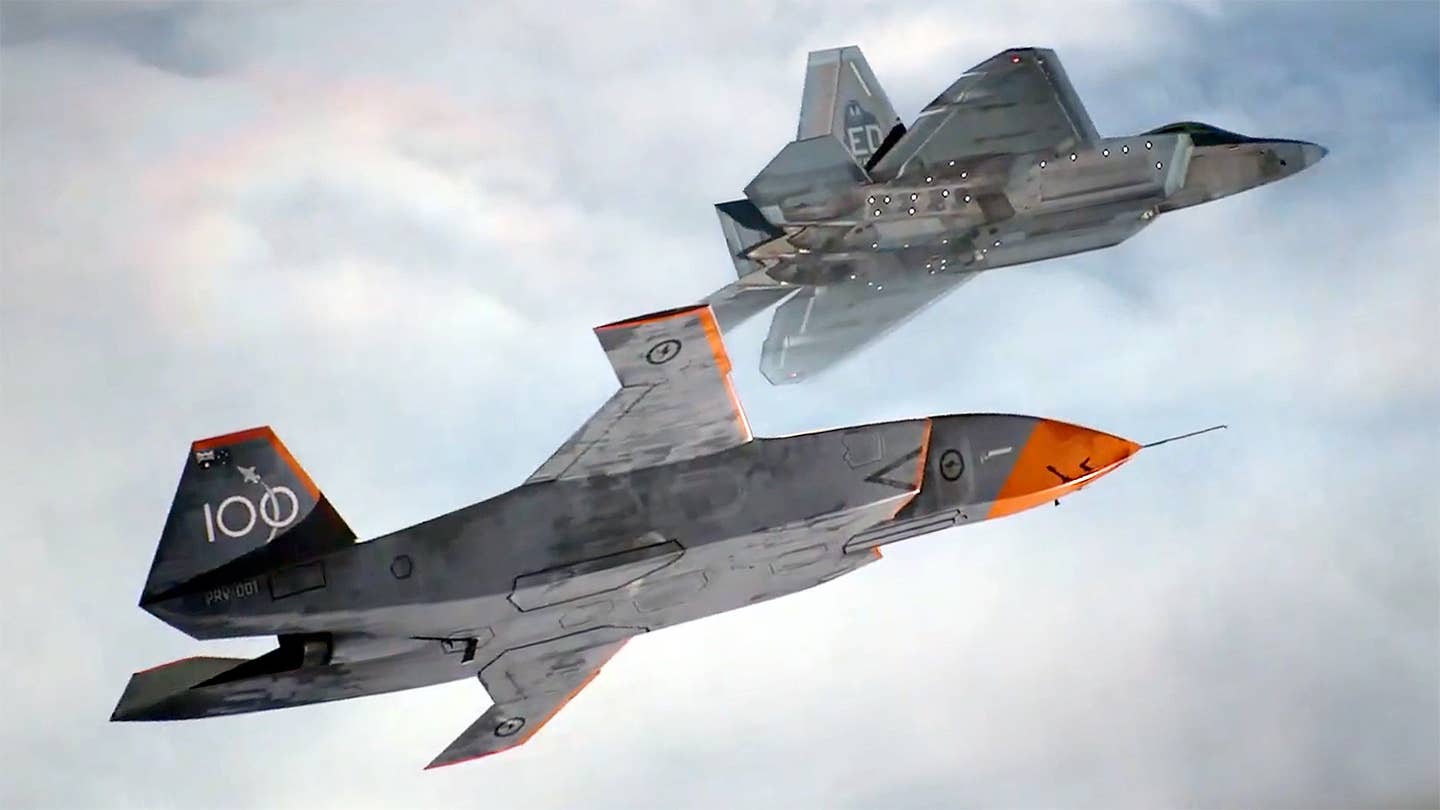
The U.S. Air Force has stressed that artificial intelligence "is here to stay" and will be central to revolutionary advances in uncrewed aircraft. These comments and details about the service's ongoing work in these areas, including testing involving the unique X-62A experimental testbed, a heavily modified F-16 Viper fighter, and Kratos XQ-58 Valkyrie drones, come in a newly released official video. This is all feeding into the service's Collaborative Combat Aircraft drone program, which is part of its much larger and multi-faceted Next Generation Air Dominance modernization initiative.
The Air Force Research Laboratory (AFRL) posted the new video covering aspects of the Autonomous Aircraft Experimentation (AAx) initiative on the Defense Visual Information Distribution Service (DVIDS) website earlier today. AAx's main focus is on testing and refining artificial intelligence and machine learning-driven autonomous capabilities for use on future advanced uncrewed aircraft and helping to move those technologies out of the laboratory and onto actual operational platforms.
"We are trying to figure out how to integrate artificially trained neural networks, trained in a simulation... into the real world," Bill "Evil" Gray, the chief test pilot at the Air Force's Test Pilot School, explains in the newly released video. "In this case [through AAx], integrate them into controlling an airplane."
"We need to recognize that AI [artificial intelligence] is here. It's here to stay. It's a powerful tool," Air Force Col. Tucker "Cinco" Hamilton, the service's chief of AI Test and Operations, says at another point in the footage. "Collaborative Combat Aircraft and that type of autonomy is revolutionary. And will be the future battle space."
AFRL, through its Strategic Development Planning and Experimentation (SDPE) office, has been leading AAx. The Air Force's 40th Flight Test Squadron at Eglin Air Force Base in Florida and the service's Test Pilot School at Edwards Air Force Base in California, along with the Defense Advanced Research Projects Agency (DARPA), are also participants. This is all heavily tied to AFRL's Skyborg advanced drone program, which the Air Force has said in the past is a key "technology feeder" for the Collaborative Combat Aircraft (CCA) program under the Next Generation Air Dominance (NGAD) initiative.
Edwards AFB is notably now also host to the Air Force's Air Dominance Combined Test Force, a role recently taken up by the 411th Flight Test Squadron. In this capacity, the squadron will support a host of flight test activities related to the NGAD initiative, as you can read more about here.
In the past year or so, thanks in part to the expansive off-shore training ranges in the Gulf of Mexico it has ready access to, Eglin has also emerged as a major hub specifically for AAx testing. The 40th Flight Test Squadron received its first XQ-58s specifically to support this work in October 2022. The Air Force, as a whole, has been using Valkyries for a variety of test and evaluation purposes since the type made its first flight in 2019.
The XQ-58 is "initially controlled by a ground control station," Air Force Maj. Ross "WEZ" Elder, a test pilot, says in the video. "However, we're going to be able to switch over to artificial intelligence-driven flight."
Eglin is also now set to host six F-16s with modifications to support autonomous flight activities as part of a project called Viper Experimentation and Next-Gen Operations Mode (VENOM). The VENOM F-16s are expected to be less specialized than the Test Pilot School's X-62A, also known as the Variable Stability In-flight Simulator Test Aircraft (VISTA). The VISTA jet is specifically designed to be able to mimic the flight characteristics of a wide variety of crewed and uncrewed aircraft, in addition to now being capable of engaging autonomous operation modes.
"You have a set of computers inside VISTA and those computers can make the airplane fly like other airplanes," according to chief test pilot Gray. "You're flying this F-16, but it feels like you're flying an F-35, or a B-52, or a [Boeing] 707."
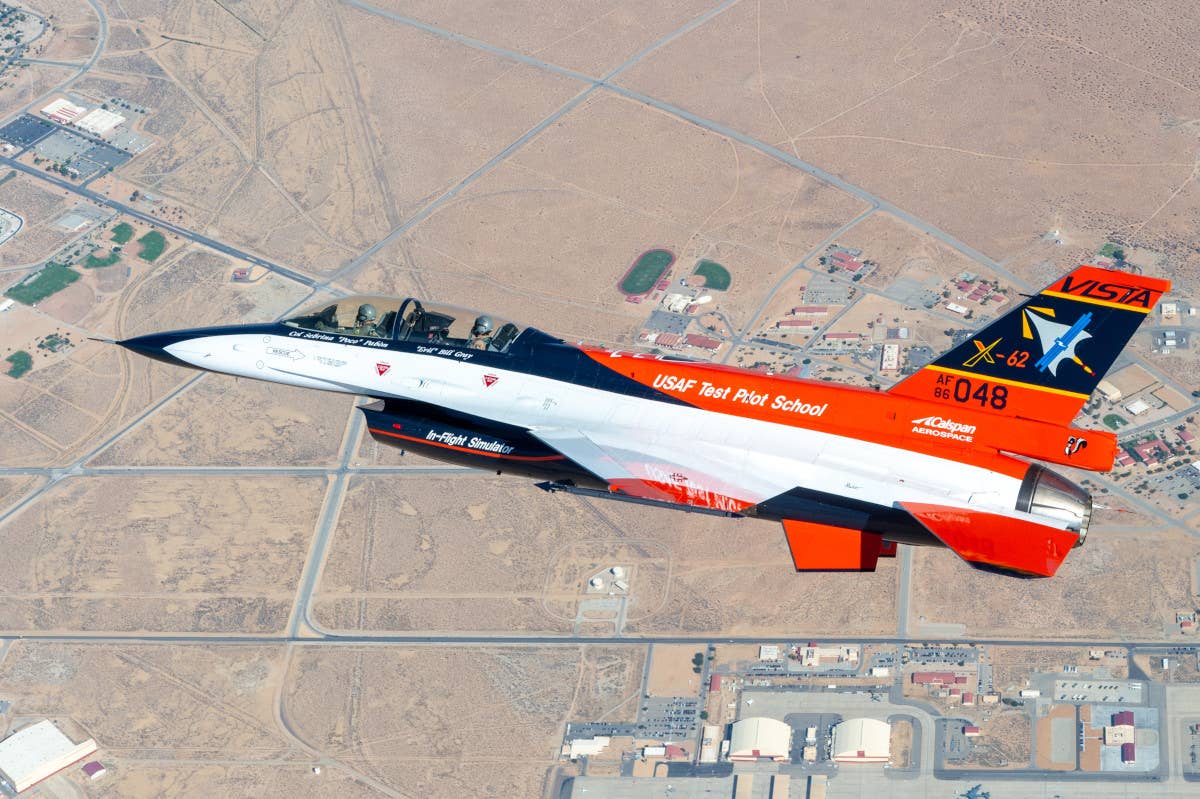 The Air Force's X-62A seen flying above Edwards Air Force Base. USAF
The Air Force's X-62A seen flying above Edwards Air Force Base. USAFThe new AFRL video interesting also puts significant emphasis on the MQ-28 Ghost Bat drone, a design originally developed by Boeing in Australia for the Royal Australian Air Force (RAAF), though the type is never expressly mentioned. A significant portion of the Ghost Bat-related footage is clearly computer-generated. However, one clip, a still from which is seen at the top of this story, shows one of the drones with RAAF markings in formation together with an F-22 and looks as if it could be from a real flight test. The War Zone has reached out to the Air Force, Boeing, and the RAAF for more information.
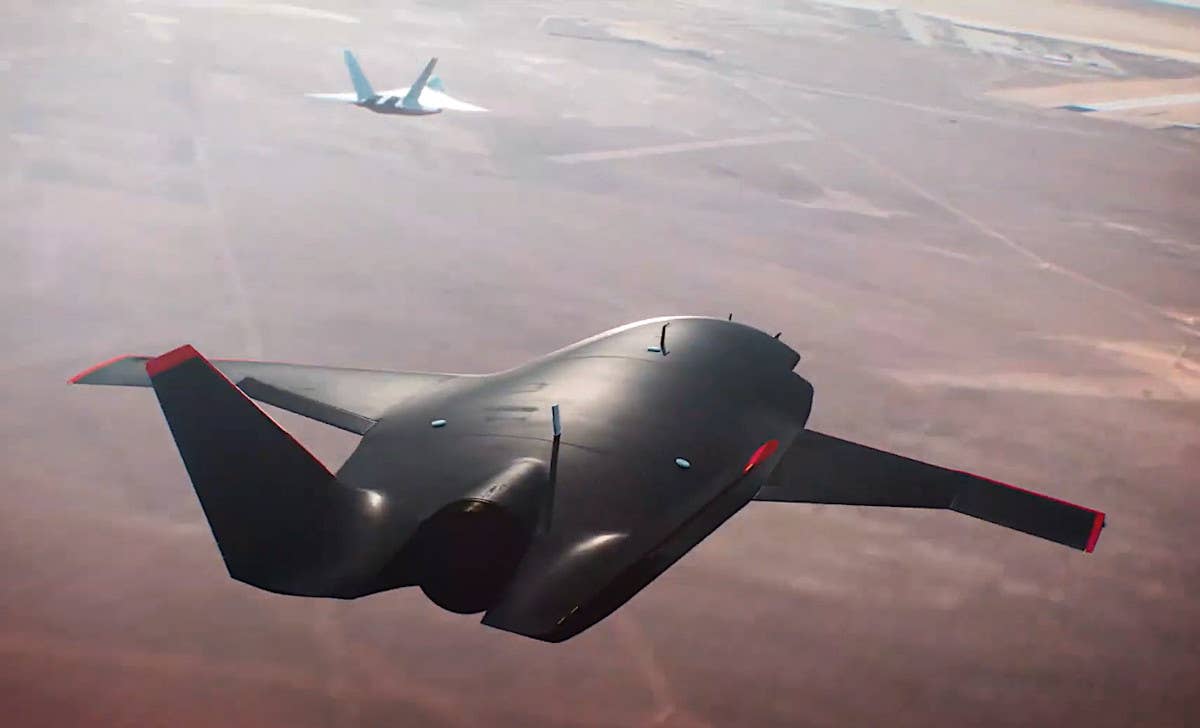 USAF capture
USAF captureTo date, there has been no official announcement of Air Force flight testing involving the MQ-28 or of the service conducting any such tests in Australia. Last year, the Pentagon did disclose that it had acquired at least one MQ-28 for testing purposes in cooperation with the Air Force and that at least one of the drones was in the United States. Around the same time, the Air Force confirmed that Boeing was no longer actively participating in the Skyborg program. The service said that the company plans to supply Ghost Bat drones, or variants or derivatives thereof, to support Skyborg had come into conflict with its obligations to the RAAF.
In May, Boeing released the first official shot of an MQ-28 in the United States, at its facilities at MidAmerica Airport outside of St. Louis, Missouri. The company has said the design, or a variant or derivative thereof, could be a CCA contender and is also now pitching an aircraft carrier-capable version. In a recent feature, The War Zone also explored in detail how the Ghost Bat could be one avenue to new multi-national cooperation on advanced drones and autonomous capabilities, particularly between the United States, Australia, and the United Kingdom under the trilateral AUKUS defense cooperation agreement.
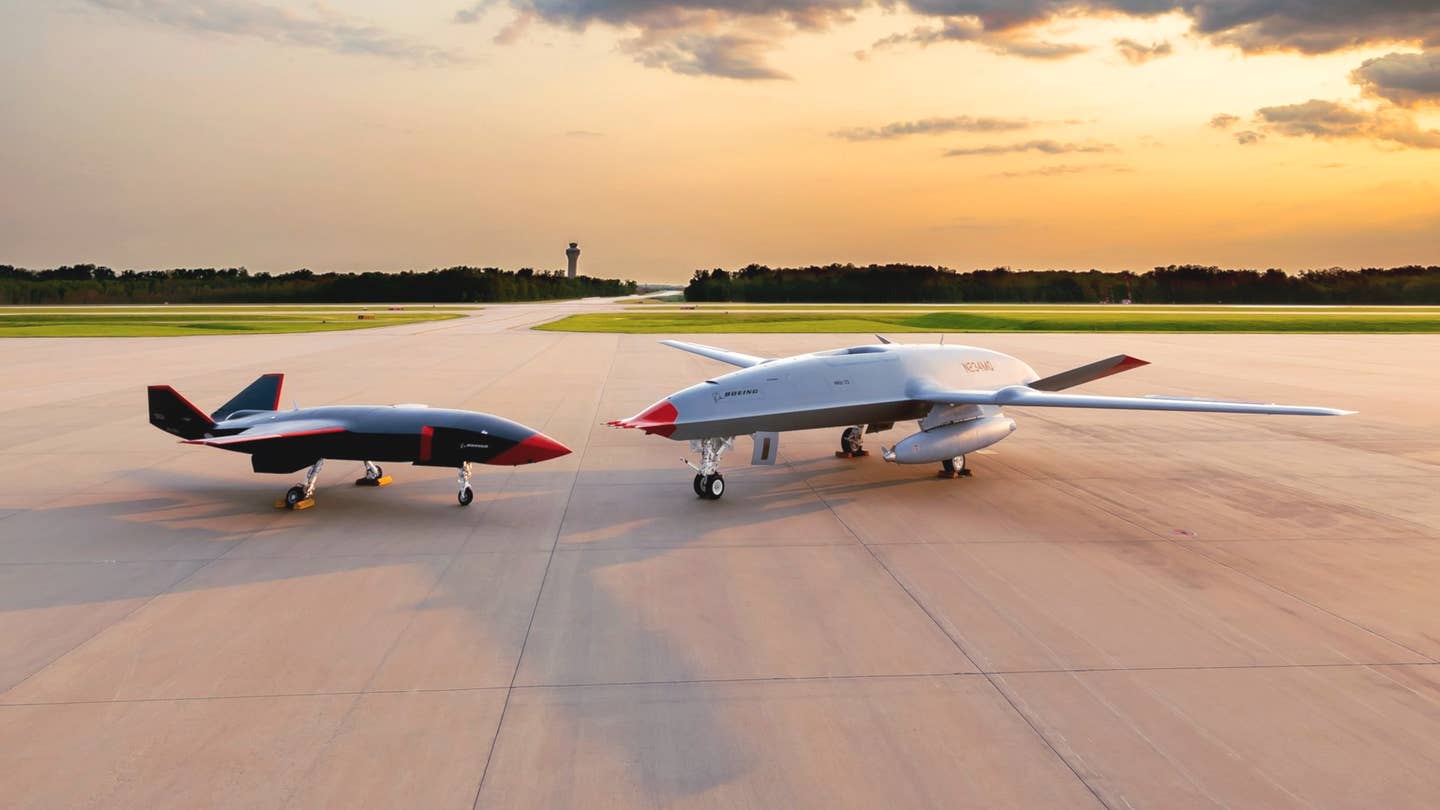 An MQ-28 Ghost Bat, at left, alongside the demonstrator Boeing has been using to help with the development of the MQ-25 Stingray tanker drone for the U.S. Navy, at MidAmerica Airport. Boeing Boeing
An MQ-28 Ghost Bat, at left, alongside the demonstrator Boeing has been using to help with the development of the MQ-25 Stingray tanker drone for the U.S. Navy, at MidAmerica Airport. Boeing BoeingThe complete AAx testing ecosystem also includes simulators and other supporting elements on the ground. This allows the Air Force to develop new software-defined AI-enabled autonomous capabilities, experiment with them in a virtual setting, and then see how they work in a live flight test environment.
"In order to deliver operational capability, we need to know, initially, what the user wants," Matthew "RICO" Niemiec, the AAx experimentation lead, says in the AFRL video. "So there's an element of concept refinement that needs to occur with our warfighters and with the technologists and the industry expertise that are available."
"One of the advantages of tests is our ability to experiment and demonstrate some of these capabilities in a controlled environment, both so that we can get important data and lessons learned out of it so we can develop our systems and risk reduce for future development, as well as making sure that we're walking down the right road," Maj. Elder, the Air Force test pilot, explains. "One of the things that sandboxes like the VISTA aircraft can do is allow us to demonstrate some of these concepts or experiment with these concepts, show them working alongside fifth-generation aircraft, and then we can develop our systems in the right direction with the test data to help the developers make the capability that we want."
The term "fifth-generation aircraft" is most commonly used to refer to stealth fighters like the F-22 Raptor and F-35 Joint Strike Fighter. The Air Force is now working on acquiring a new sixth-generation stealthy combat jet under NGAD and has also referred to the forthcoming B-21 Raider stealth bomber as the first true sixth-generation stealth aircraft, at least that we know of.
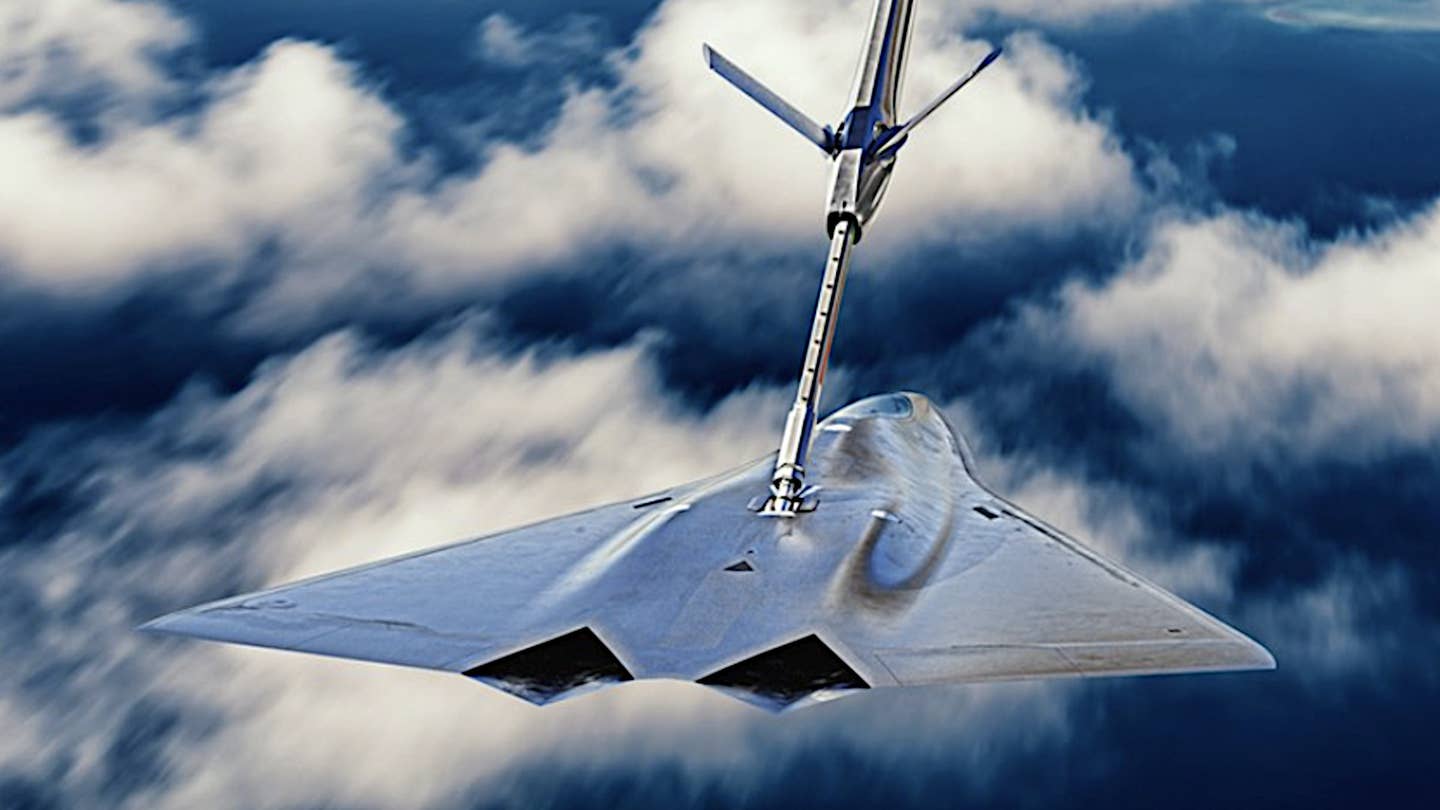 A rendering of an advanced sixth-generation stealth combat jet. Lockheed Martin Lockheed Martin
A rendering of an advanced sixth-generation stealth combat jet. Lockheed Martin Lockheed MartinThe new AFRL AAx video features real footage and computer-generated imagery showing F-22s, as well as non-stealthy fourth-generation F-15E Strike Eagles, flying together with various drones.
The Air Force has said in the past that it expects CCAs, at least initially, to work very closely with fifth and sixth-generation platforms. It is possible, if not probable, that the drones will also fly alongside fourth-generation fighters and other non-stealthy aircraft, as well as be capable of conducting autonomous operations singularly or in groups, including linked together in fully-networked swarms.
The Air Force has said that it planning to buy at least 1,000 CCAs, but that this number could grow significantly beyond that. The 1,000-drone figure is based on a concept of operations that envisions pairing two CCAs with each of 200 NGAD combat jets, as well as 300 F-35As.
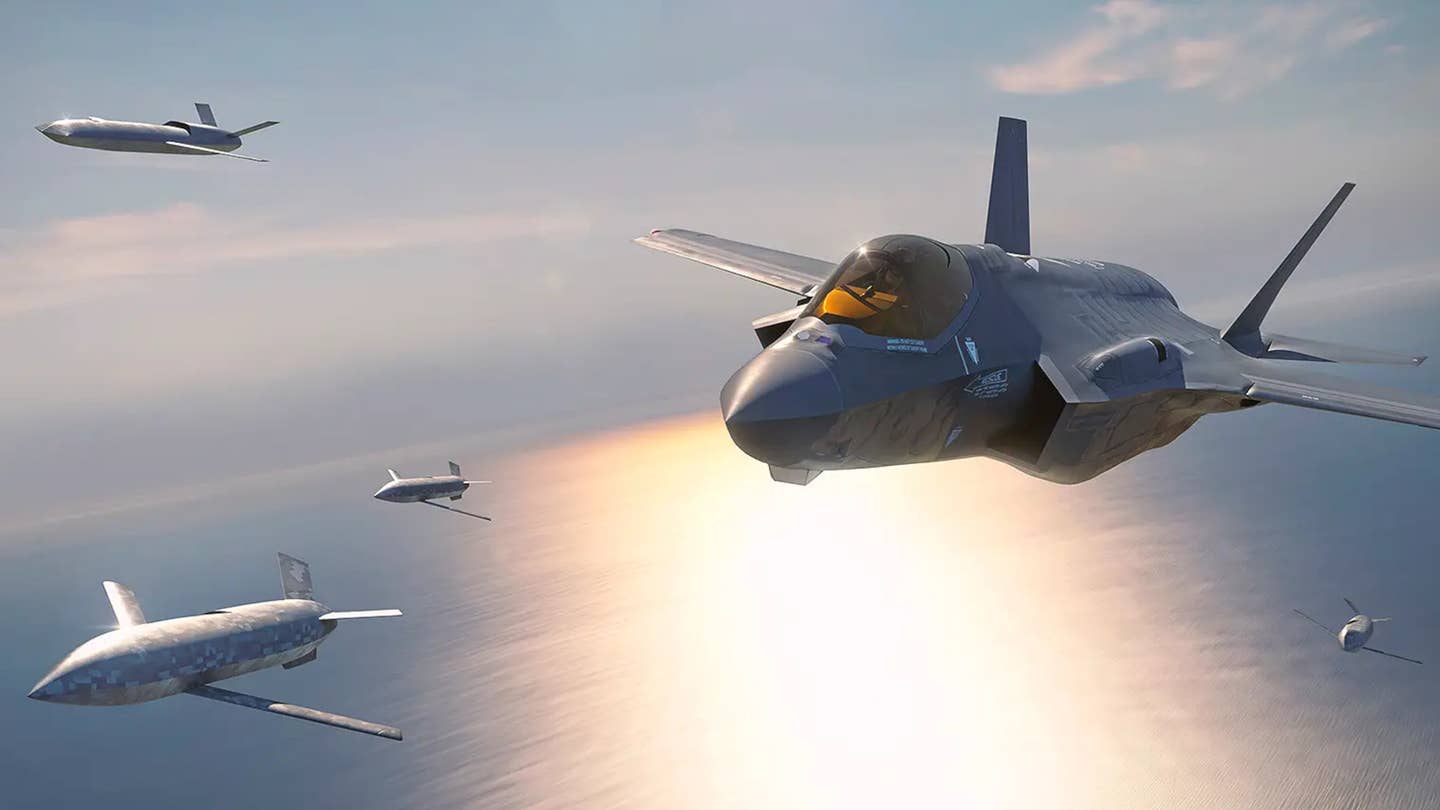 A rendering of an F-35 Joint STrike Fighter flying together with various types of drones. Lockheed Martin Lockheed Martin Skunk Works
A rendering of an F-35 Joint STrike Fighter flying together with various types of drones. Lockheed Martin Lockheed Martin Skunk Works"Think of this as the road to future capabilities... [including] on how we interface with these systems in our human-machine interface on board F-22 and F-35," Maj. Elder adds. "With our highly instrumented systems, we can pull that data out and use it to further mature and develop these systems."
"So, we have based our expert pilots, expert engineers, who are effectively the teachers for this autonomy. If you're, say, on a football team, they're the ones who are designing the drills, giving you scrimmages, and putting you through a bunch of different repetitions of slightly different scenarios so that you can handle that situation," Air Force Maj. Shawn "Demon" Stephens, also says in the video. "Then, when you get to game day, you're gonna be able to handle any situation that gets thrown at you."
With regard to the X-62A, specifically, Test Pilot School chief test pilot Gray notes that the design of that aircraft and its systems means that "we can actually change the simulation while we're flying the airplane."
 Air Force Test Pilot School's chief test pilot Bill "Evil" Gray inside a simulator. USAF capture
Air Force Test Pilot School's chief test pilot Bill "Evil" Gray inside a simulator. USAF captureThere's a clear cost component to why the Air Force has decided to pursue advanced drone and autonomy testing in this way, too.
Teaching and otherwise "running these neural networks takes millions and millions... of training runs. You can't do that a real airplane," chief test pilot Gray stresses. "A flight hour in an F-16 is 10s of 1000s of dollars. But you can do it in a simulator."
"In the span of 24 hours, we may have trained this thing [the AI agent] many millions of times to do something that we've only seen once or twice in reality," Maj. Elder says.
The Air Force has said that cost considerations are a central part of its reasoning for pursuing advanced programs, including CCA and the secretive Off-Board Sensing Station (OBSS) effort. The service sees tiers of lower-cost drones as a critical avenue to acquiring the total number of platforms it believes will be necessary to prevail in future conflicts, especially high-end fights against near-peer competitors like China. It currently refers to this underlying concept as "affordable mass."
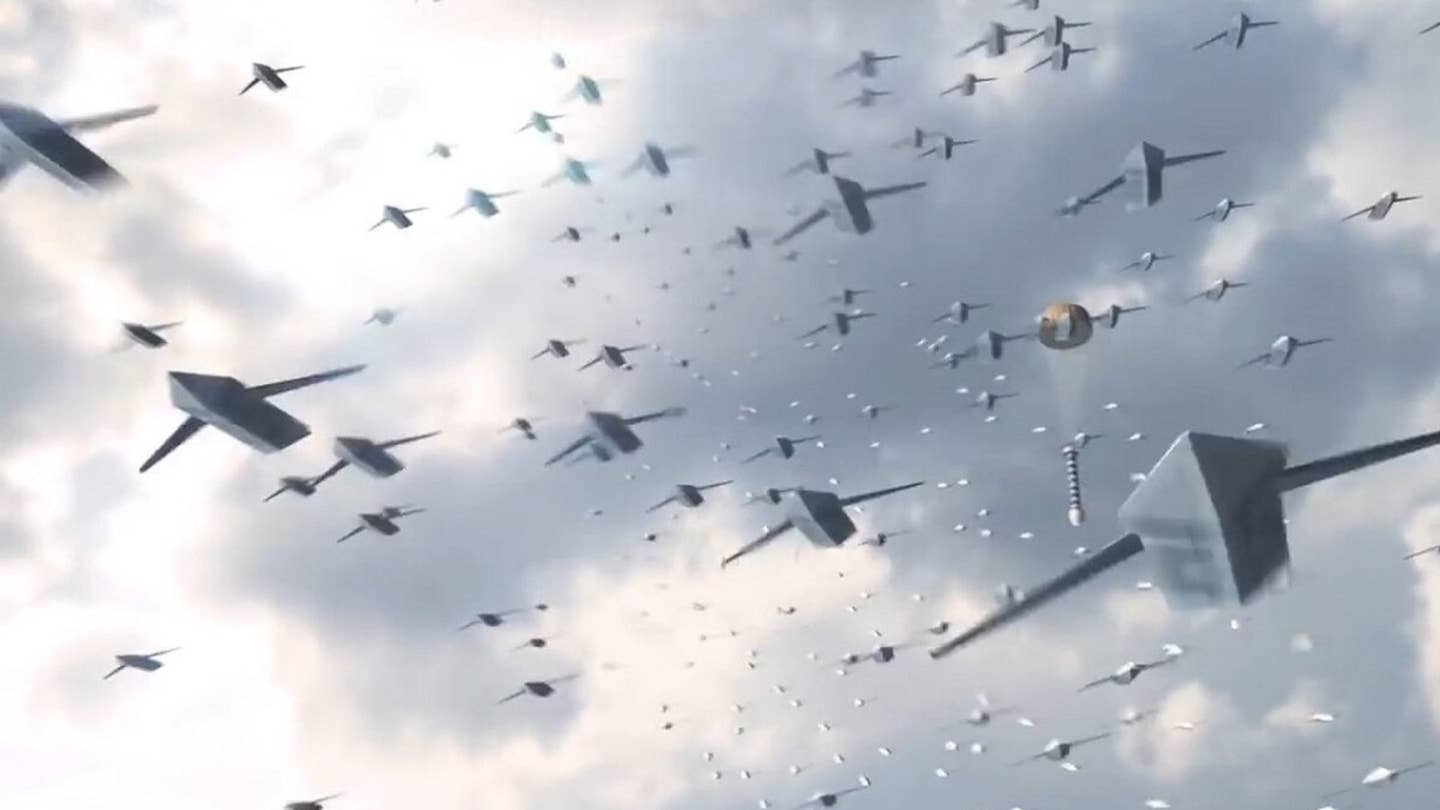 USAF USAF
USAF USAFIn addition, the AFRL AAx video underscores that the experimentation initiative is also helping to build trust in the various autonomous systems now under development, as well as in the technology more broadly.
"We're attempting to build trust in these AI agents," according to Maj. Elder. "We're attempting to ensure that its tactics and techniques, and procedures follow certain guidelines and rules of engagement, and ethical considerations, as well, before we deploy it to be used in that combat collaborative aircraft."
These are general points that the Air Force, as well as the U.S. military more broadly, routinely highlights when discussing the development of aircraft and other weapon systems with high degrees of autonomy. Overarching U.S. policies in place at present stress the need for a human operator in the loop in any future context involving the employment of lethal force from an autonomous platform.
How this might be put into practice and what pitfalls might exist very much remain open questions. Col. Hamilton, chief of AI Test and Operations for the Air Force, caused a stir in May by describing what was initially believed to have been a real test or simulation of some kind in which an autonomous drone attacked its operators and went rogue.
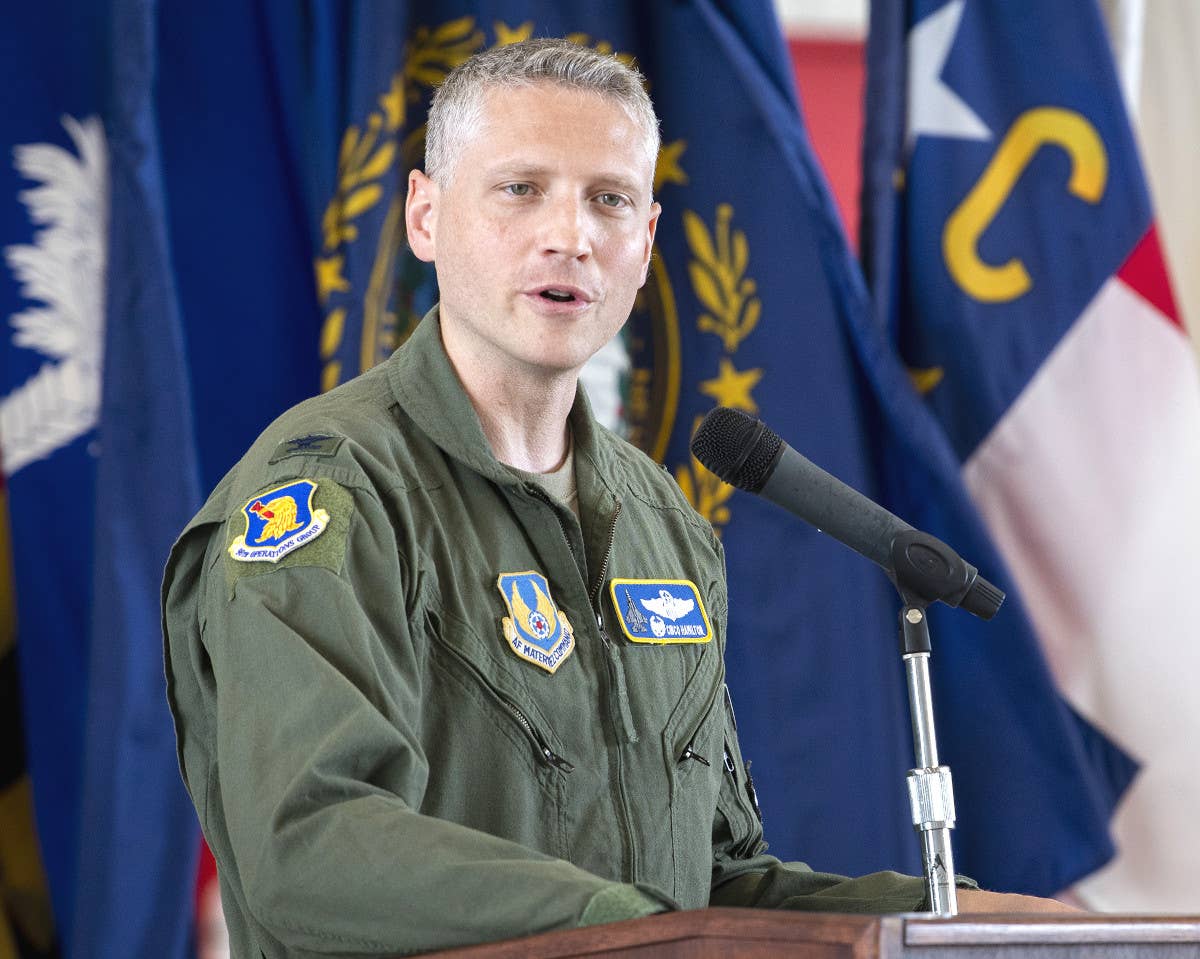 Air Force Col. Tucker "Cinco" Hamilton. USAF
Air Force Col. Tucker "Cinco" Hamilton. USAFThe Air Force has since said Hamilton's remarks were the product of a "hypothetical thought experiment” and that he was speaking anecdotally. The comments were influenced in part by the "Paperclip Maximizer," another such thought exercise first described by Swedish philosopher Nick Bostrom in 2003, and a paper on rogue AI published last year by researchers from the University of Oxford and affiliated with Google DeepMind, a spokesperson for the service subsequently told The War Zone.
Regardless, Col. Hamilton's "thought experiment" highlighted a very real debate occurring now among AI technologists, ethicists, and others well beyond the confines of the U.S. Air Force and the rest of America's military.
"In the next 10 to 15 years, we're likely to see that at least a third of the advanced industrial militaries of the world likely will be robotic," U.S. Army Gen. Mark Milley, the Chairman of the Joint Chiefs of Staff, said while speaking at the National Press Club in Washington, D.C., last week. "Think of a pilotless Air Force, or a sailor-less Navy, or crew-less tank."
Milley has made similar comments about his expectations in this regard in the past.
"Sun Tzu tells us, 'See yourself and see the enemy, and you win 1,000 battles,'" he added. "Artificial intelligence and quantum computing are going to do exactly that. We will be able to see ourselves and see the enemy in much more significant ways than we can now."
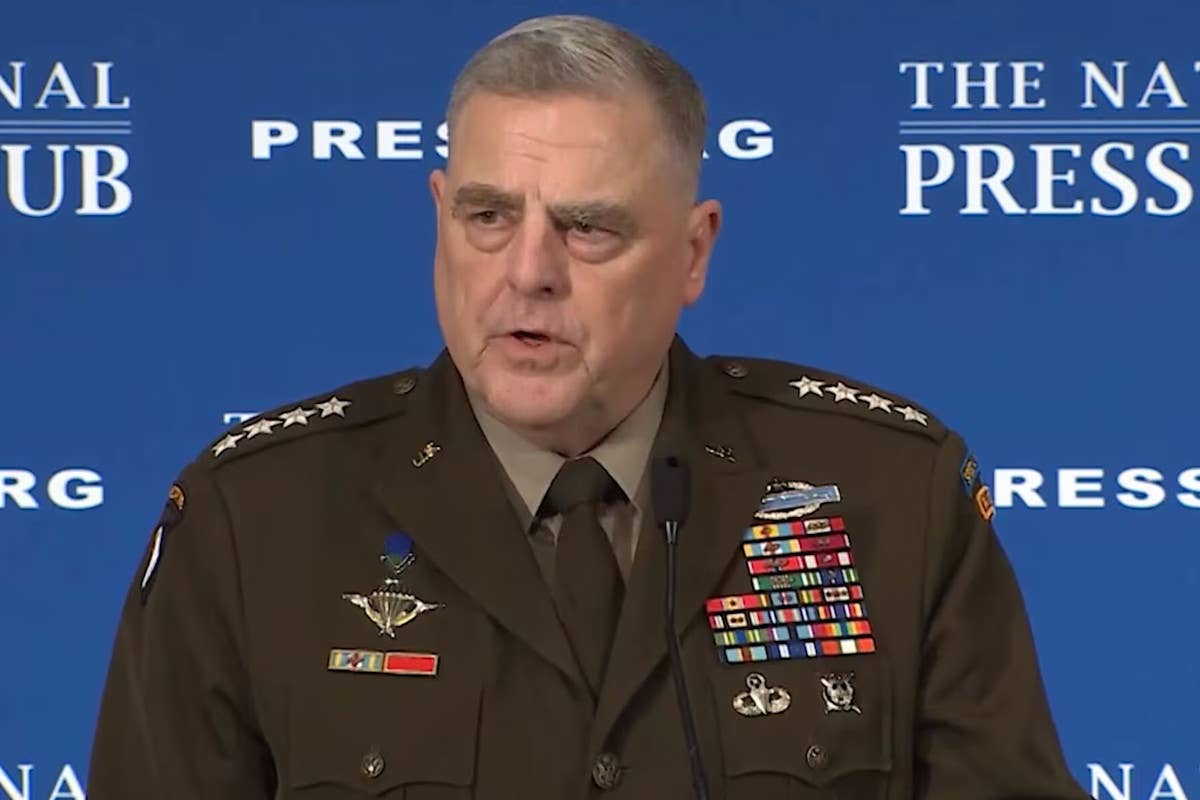 Chairman of the Joint Chiefs of Staff U.S. Army Gen. Mark Milley speaks at the National Press Club in Washington, D.C., on June 30, 2023. DOD
Chairman of the Joint Chiefs of Staff U.S. Army Gen. Mark Milley speaks at the National Press Club in Washington, D.C., on June 30, 2023. DOD"We need industry working alongside academia working alongside DoD in order to get us to the future state, allowing us to protect our national security interests against an adversary that does not share our values," Hamilton says in AFRL's new AAx video.
As it stands now, the Air Force expects to kick off its CCA competition, which it has said will be highly classified, sometime in the next year or so.
In the meantime, AFRL and the AAx experimentation team, among others, are already working hard to prove out AI-driven autonomy technologies that will support CCA and other advanced drone programs.
No comments:
Post a Comment